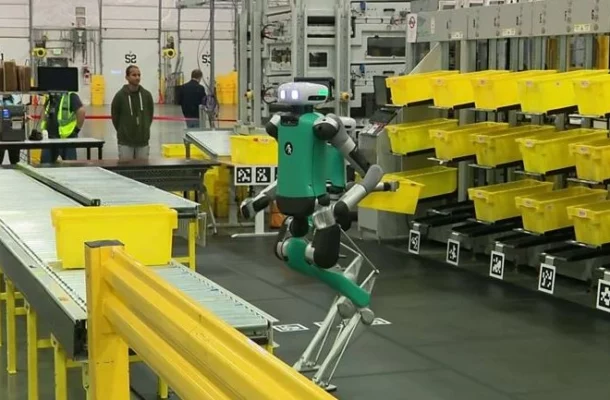Amazon's experiment with incorporating robots in its US warehouses raises questions about the future of human labor. Learn about the implications of this automation move and the promises it holds for improved operational efficiency.
Introduction:
As Amazon, the tech behemoth, continues to revolutionize the e-commerce landscape, its latest trial involving the integration of robots within its US warehouses has stirred both excitement and apprehension. The deployment of these robots, aimed at streamlining operations and enhancing efficiency, hints at a future where automation could redefine the dynamics of the workforce. With a pledge to prioritize customer service, Amazon's decision to experiment with robotics reflects the ongoing quest for innovation and the pursuit of cutting-edge technologies in its operational framework.
Enhancing Operational Efficiency: Amazon's Rationale for Robotic Integration
In response to the growing demands of an ever-expanding customer base, Amazon has underscored the significance of implementing robotic systems within its warehouse infrastructure. Highlighting the motive behind this move, Amazon emphasized the goal of liberating human employees from mundane tasks, enabling them to focus on delivering enhanced services to their customers. The introduction of 'Digit,' a robot equipped with human-like capabilities, serves as a testament to Amazon's commitment to integrating advanced technologies to optimize workflow and expedite the order fulfillment process.
Humanization of Robotics: The Promise and the Perils
Despite Amazon's claims of empowering its workforce through automation, concerns have been raised by labor unions regarding the dehumanization of workers and the potential ramifications on job security. Accusations of treating employees akin to machines have plagued the company, amplifying the existing discourse on the ethical implications of widespread automation. The introduction of humanoid robots such as 'Digit' further blurs the line between human and machine, prompting critical evaluations of the societal impact of these technological advancements on the future of labor dynamics.
Amazon's Counterclaims: Job Creation and Collaborative Endeavors
In a counterargument, Amazon has asserted that the integration of robotics has resulted in the creation of a substantial number of new job opportunities within its operational framework. Emphasizing the symbiotic relationship between human labor and automated systems, Amazon's spokesperson highlighted the collaborative efforts between human employees and robots to bolster overall productivity. With over 750,000 robots currently operating alongside human staff, Amazon aims to emphasize the role of automation as a complementary tool rather than a substitute for human involvement, underscoring the company's commitment to striking a balance between technological progress and workforce empowerment.
Implications for the Future of Labor and Innovation
The ongoing trial of robotics within Amazon's warehouses serves as a harbinger of a paradigm shift in the global labor landscape, raising pertinent questions about the coexistence of human labor and advanced automation. While the integration of robots promises heightened efficiency and optimized operations, it also necessitates a comprehensive reassessment of workforce dynamics and the implementation of robust measures to safeguard employee welfare and job security. As Amazon continues to navigate the intricate intersection between technology and labor, its endeavors serve as a catalyst for a broader conversation on the ethical, social, and economic implications of the relentless pursuit of automation in the contemporary era.


Comments